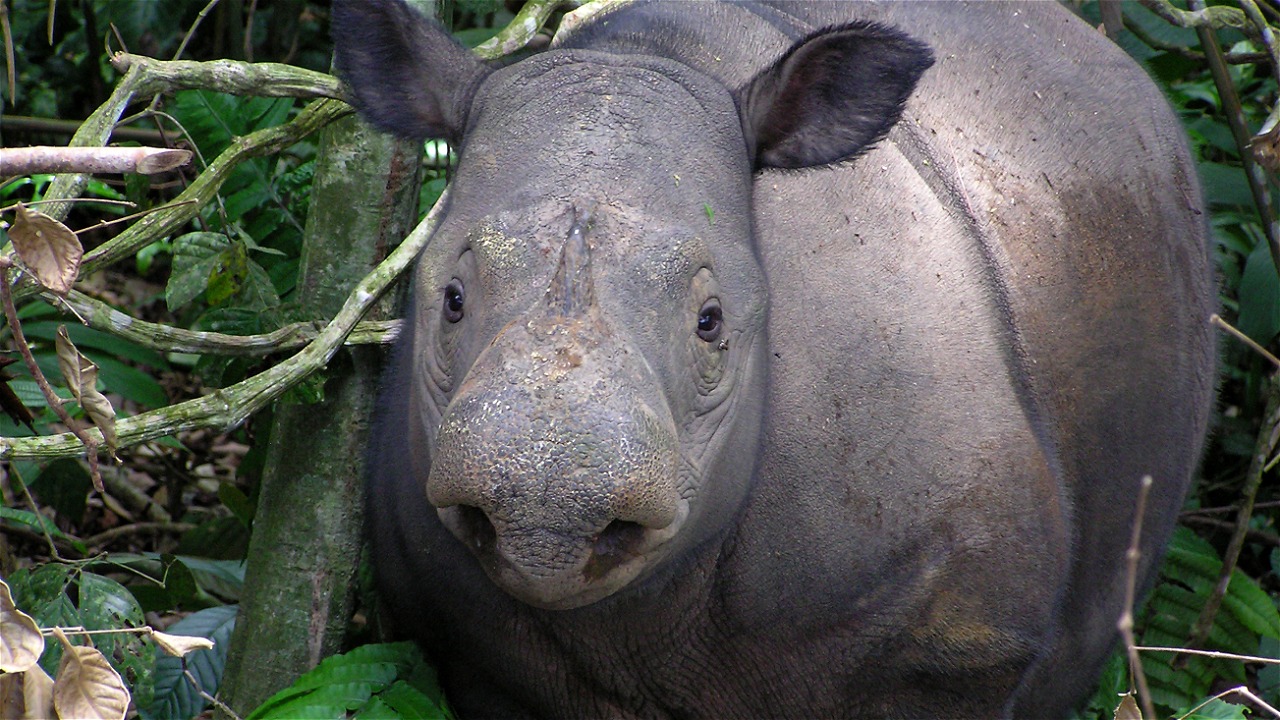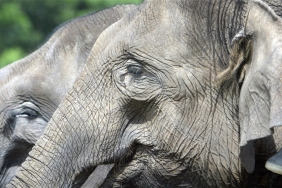POPULATION OF THE HAIRY RHINO REMAINS AT HIGH RISK
By Masayu Yulien Vinanda
The existence of Sumatran rhino (Dicerorhinus sumatrensis) may not be as popular as Javan Rhino. Not many are aware that human activities have brought the species to the brink of extinction. Sumatran rhino is one of the nation’s biodiversities which can only be found in Indonesia. Once it was found over the foot hills of the Himalayas. Very small population is dispersed and single individuals are isolated in Sabah, Malaysia. The method of assisted reproduction has been conducted through the establishment of breeding center there. It might work however, only with the help of “luck” factor.
Sumatran rhino is the only Asian rhino with two horns. It is sometimes referred to as the ‘hairy rhino’ because of the long coarse hair covering its body. The two-horned rhino is the smallest of the five living rhinoceros species. The body length ranges from 6-9 feet and usually about 3 feet in height. Its body weight is less than 1 ton. It is estimated that fewer than 200 individuals survive in the wild. It is justifiable that this two-horned rhinoceros was then listed as critically endangered by The International Union for Conservation of Nature (IUCN). The Sumatran rhino has been officially granted the status since 1996.
The number of Sumatran rhino pockets has been drastically decreased. There are only three main pockets remaining in the island; in Bukit Barisan Selatan National Park, Way Kambas National Park, and Leuser National Park. As a comparison, based on the Indonesian Rhino Conservation Strategy published in 1994, in Sumatra island there were still 17 locations of rhino pockets. In addition to that, decades ago, this species was even spread nearly all over Sumatra populations.Extensive rhino poaching was associated with the great loss of rhino population. Its horns and other body parts were hunted since many believe that they have medicinal use. Furthermore, some of the local communities also use the horn as an antique house property.
“Besides poaching, massive deforestation is also one of the major factors threatening the remaining Sumatran Rhinos. Uncontrolled forest conversion has caused forest fragmentation. Consequently, in some cases, the rhinos were reported entering communities plantation, looking for food. In Bukit Barisan Selatan NP (BBSNP), Lampung, forest conversion into coffee or other plantations poses the major threat for the rhino habitat,” Adhi Rachmat Hariyadi, Coordinator for WWF-Indonesia Rhino Conservation Program said.
Besides BBSNP, WWF-Indonesia has also been conducting Sumatran rhino conservation efforts in Taman Leuser, Aceh. Various research activities have been underway in order to identify the species distribution and the quality of its habitat. Meanwhile, for area monitoring activites (patrol), Adhi said, the local communities have been intensively involved. The people living near the rhino habitat could effectively “safeguard” the rhino population.
“The information regarding the species distribution and the quality of its habitat is essential as a guidance to prepare effective conservation strategy. This will also enable intenstive monitoring activities providing various information, not only the distribution and population but also health records of the species. Other important thing is engaging the local communities to help safeguard the species since the locations are dispersed and isolated. It needs to be done since the conventional patrol system is still unable to reach those locations properly,” Adhi added.
The Sumatran rhino protection efforts can’t no longer wait. Its long list of threats needs to be seriously considered by many parties. If we failed to protect Sumatran rhino this time, there would be no hope for the species to survive in the wild, no secure space left in the world for it to live. Sumatran rhino is an architect of Sumatra landscape. If this species went extinct, the face of Sumatran forest vegetation would never be the same.





